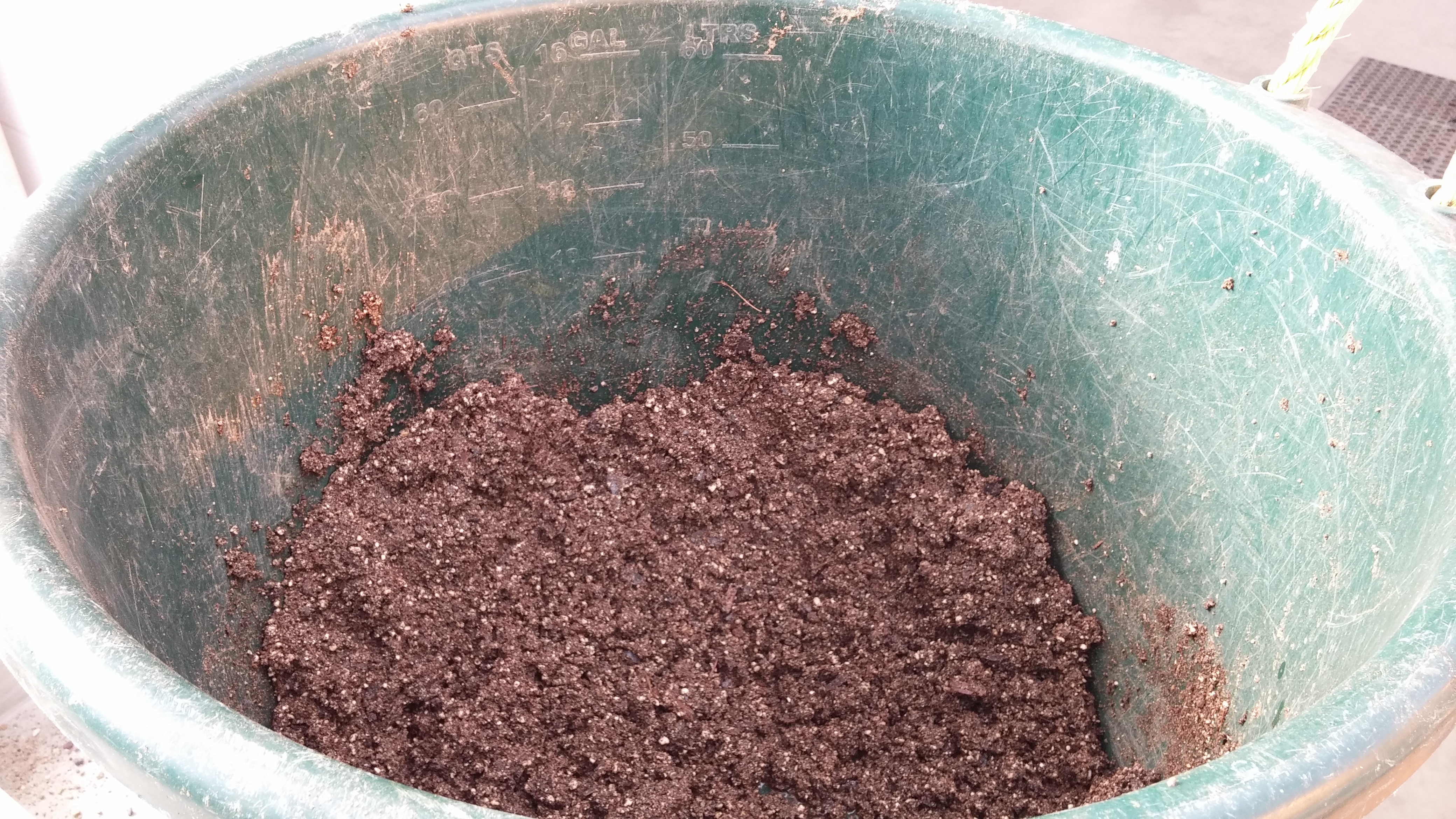Potato Mixology Part 1: Breeding new potato varieties on organic farms
– Erin Schneider, Hilltop Community Farm
Which came first: the tuber or the seed?
When we talk about seed potatoes, we mean tubers harvested from last year’s potato crop, which will be planted to grow this year’s crop. But what about potato seeds? Where do they fit in the potato life cycle? Potato seeds result from pollination of ovules, the “eggs” of plants, and are harvested from potato fruits. We often refer to them as “True Potato Seed” (TPS) to differentiate them from “seed potatoes” which are genetically identical clones of the parent plant.

TPS are anything but genetically identical! Potatoes are ‘highly heterozygous autotetraploids’ – they contain four copies of each chromosome, and there is considerable genetic variation between chromosomes. This makes for a wide range of plant and tuber types resulting from sexual reproduction. So if you start with TPS from an Adirondack Blue plant and expect to see uniform blocky tubers and blue flesh at harvest time, you may be surprised by the end result!
Potato Mixology
While you might not want all this variability in your production crop, it represents a rich opportunity to select for new varieties. Potato plants grown from true seed are a giant mix-and-match of characteristics from their parents – plant vigor, disease and insect resistance, maturity, tuber shape, color, taste, storability… it’s all there for you to select.
This coming season, Ruth, Amy, Doug and the rest of the Organic Potato Project team will be providing training on crossing potato varieties to interested farmers, and will provide you with true potato seed from crosses that performed well in previous organic trials. I for one am looking forward to participating. While it might take a bit of extra time and commitment of field space on my part, curiosity and long term benefits outweigh the upfront costs. I also think I’m getting a great deal and education in collaborating with researchers and fellow farmers. If you’re like me it took me a while before the simplicity of starting potatoes from seed sank in—indeed I had to think like a tomato before I could transition to thinking like a potato.
Let’s take a closer look at germinating and plant propagation techniques for true potato seed (TPS). (Hint: this is an awful lot like the process for starting your tomato plants in the greenhouse).
Seeding Possibilities: Propagation from True Potato Seed 
True potato seed process in the Jansky lab at UW-Madison – from fruit to field. Pictures courtesy of Andy Hamernik and Shelley Jansky.
Shelley Jansky’s laboratory in the UW-Madison department of Horticulture focuses on developing potato germplasm for breeding and genetic research. The pictures above show their process of collecting seed, starting and transplanting seedlings in the greenhouse, and transplanting into the field for selection.
Start by seeding TPS shallowly into moist potting soil mix. Germination is often improved if seed is planted thickly – apparently potato seeds like company! On average potatoes planted from true seed take 3 weeks until true leaves form and they are ready for transplanting.
Transplanting Timeline – Insights from ‘Cindy Sheehan’
Ruth and team have been experimenting with lab and greenhouse propagation. These pictures follow the growth of plants from TW54, an F3 population after seedlings were transplanted to pots. These plants were grown to produce tubers in the greenhouse, so have been allowed to develop past the point where they would normally be transplanted to the field.
Priming seedlings, prepping soil and pots for TPS transplants.

Life starts and ends with the soil – the same is true with the potato life cycle. Fortunately, potato seeds take root in your basic potting soil or seed starting medium.

Transplanting Success: Young potato seedlings grown from true seed recently transplanted to potting soil medium.

Watching ‘Cindy’ Grow: TW54 Time lapse potato phenology’



Transplanting into the Field: Your potatoes will be ready for transplant into the field about 6-8 weeks from seeding. Since potato plants from TPS produce only one stem, unlike tuber-derived plants which will produce several, they should be planted into warm, well-prepared soil and kept well-weeded.

Now it’s your turn!
Whatever propagation system you choose to utilize, we hope that you too will find success and fun growing potatoes from true seed in nursery beds or potting trays and transplanting seedlings into your fields.

From there the possibilities are endless. We can start to observe and select for desirable traits for organic production such as early vine vigor, leafhopper tolerance and resistance to tuber defect diseases, as well as playing with colors, flavors and other qualities that we know work for our markets, our soils, and our farm systems.

The importance of locally responsive seed system for farmers is evident. As more varieties are discovered, we have the opportunity to collaborate and work in partnership with researchers, suppliers, and our soils to cross-pollinate and dissolve boundaries that in the past were prohibitive for farmers to access, creating a reliance on outside inputs and never really knowing if the varieties you need will be there next year. As a farmer, being invited to experiment with cultivating my own varieties from seed that I can save is food security I can ‘seed’ bank on.
Contact Ruth if you are interested in participating crossing potato varieties.
Further reading:
Rebsie Fairholm: How to breed your own potatoes
Jansky Lab: Potato Germplasm Enhancement
This article was posted in Blog Posts, Opportunities, Research News and tagged on-farm crop breeding, potato breeding, potato variety trials.
